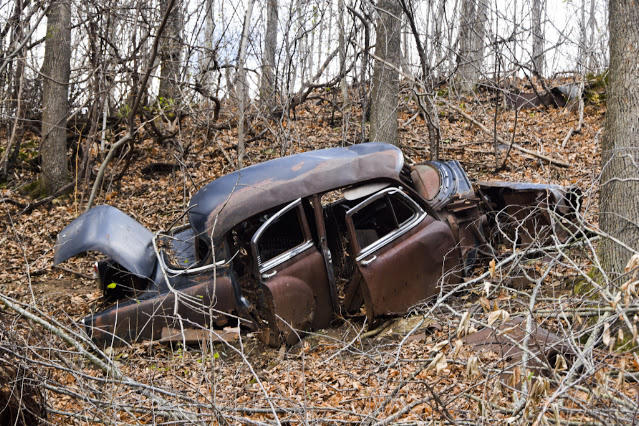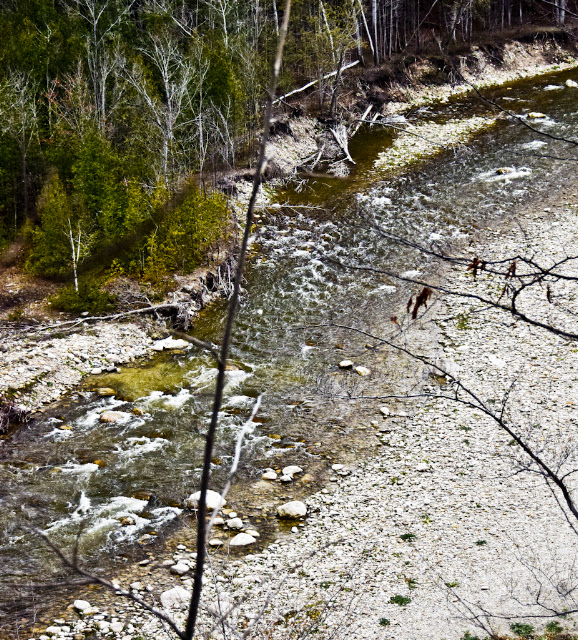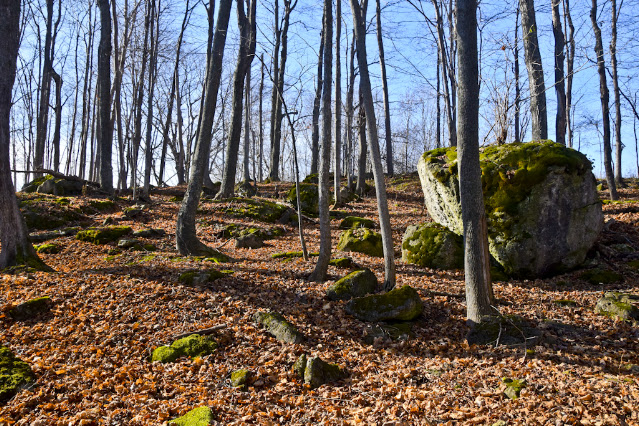We drove to Collingwood the other day, to have lunch with a cousin who faithfully visits twice a year. We ate at the Eggsmart restaurant, a breakfast and lunch spot that closes at 2.30. It was a great visit with good food! On the drive back from Collingwood, a few of the ski runs on Blue Mountain become briefly visible, and they were making snow, reminding me that ski season will soon start.
Here they are, right in front of us. You may be able to see a bit of blurry snow in places; that's where they have the snowmaking going.The big resort here, out of sight to the left, is Blue Mountain. Next come the Toronto and Craigleith Ski Clubs, and then the runs you're seeing here for Alpine Ski Club. The last one, in the picture below, is Georgian Peaks. Thus 'Blue Mountain' conveys two different meanings. First it refers to the entire bedrock outcrop that creates this long north-easterly slope, with its five ski destinations, but second it refers in a more restricted sense to Blue Mountain Resort or just 'Blue'. 'Blue' is the only public ski area; the others are private clubs, with very substantial initiation fees.
You can see the snow-making guns blowing like mad in this picture of 'The Peaks'. All these clubs as well as the resort work hard to have snow cover in time for Christmas. The holiday week that follows is their busiest week of the year, and contributes enormously to profitability.
Looking the opposite direction I managed to get a shot of Georgian Bay without trees in the way. Here the shoreline you're looking at consists of the very flat layers of the Lindsay Formation. home to many fossils of the Ordovician era, 440+/- million years ago.






















































